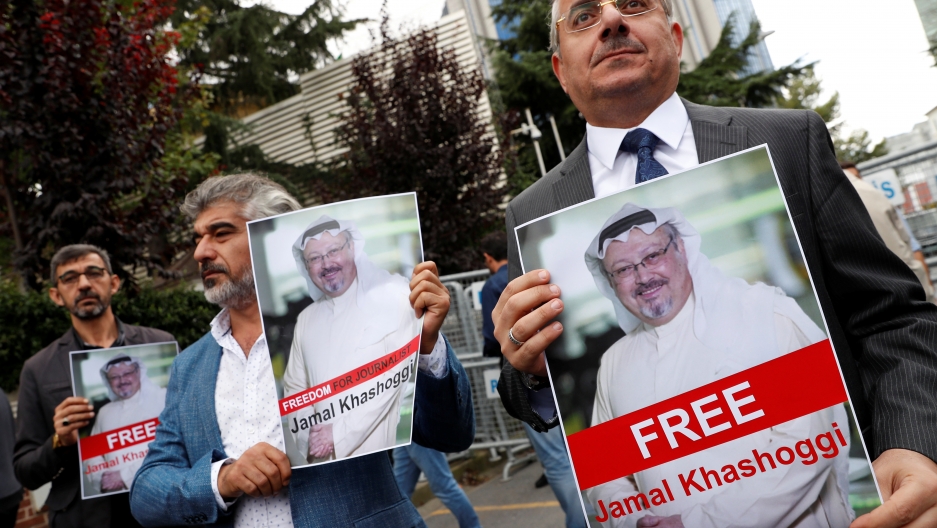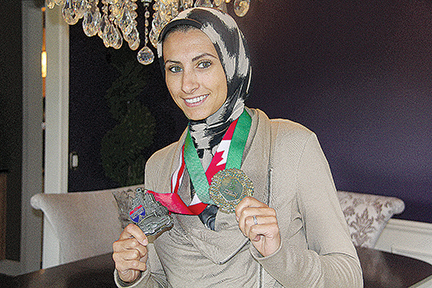SE Michigan (V9-I5)
Business Management Seminar at BUC
How to manage change at a business
Bloomfield–January 19–The Bloomfield Unity Center hosted another great learning experience for its congregation this past Friday evening. Dr. Ahmed Ezzedine, assistant dean of executive and professional development at Wayne State University’s School of Business Administration gave a detailed, two-night discussion of management strategies which began January 12th and finished January 19th. On the 19th, an enthusiastic group of about 60 audience members listened to his detailed discussion of the procedure and challenges of bringing change to business.
The purpose of the January 19th lecture was to teach audience members to understand the personal impact of change, accept the need for change, and learn abilities to help shepherd an organizational change from beginning to end.
Dr. Ezzedine spoke in detail about the process of engaging a business’ staff for the purpose of creating a change. He emphasized the essential nature of change for business and life.
He posed his audience questions of how we respond to change and why we resist change. As a metaphor to demonstrate the difficulty of change, he asked audience members to write their first names left-handed. He addressed the difficulty of doing so, and the weak quality and childish nature of the results, but said that with practice we would be able to improve. He pointed out that all adults are programmed to do things in our own ways, and implied that the process of change is the process of rewiring basic functions–something we naturally resist.
As leaders, he explained, in implementing change, it is our responsibility to work through the difficulties associated with change, to show a business’ employees the possibilities and vision associated with change.
Perhaps the most interesting and useful stage of his presentation began when he broke down all five elements necessary to bring organizational change to fruition. The five necessary steps were: vision (a clear vision of the change must be articulated concisely to employees); skills (new skills must be learned and practised); incentives (positive and negative); resources (money, people); and action (without which everything else is useless). All of these elements must combine together, he said. He went into a detailed discussion of the pitfalls that await organizational change that is missing any one of these five elements, explaining that if all five are present the change will go through.
The most commonly missing element of the five listed above is resources, which if missing leads to a prevailing sense of frustration at the affected company.
Another interesting analysis was a graph of “challenge†against “skills,†and he showed that the greater the skills of any person, the greater should be the challenge posed to that person by his/her job, in order for him/her to function at an optimal level. He showed the balance between work, stress and apathy. He showed also that it is relatively easy to move people away from stress, but harder to move from apathy towards productivity and stress.
He emphasized the importance of combining control and action so that employees can work strategically.
Again, he emphasized the “vision†that must accompany change. This vision, he explained, must be crystal clear–â€You must be concise, convincing, and considerate.†“Give me five sentences to describe the vision.†Consider the WIIFM factor (What’s in it for me), he emphasized, in communicating this vision.
What was interesting about Professor Ezzedine’s lecture was his ability to engage the audience by means of simple experiments. One such experiment was a personality test that all of the partcipants took–which classified each according to 4 labels, (follower, sleeper, blocker, or activator). Audience members giggled appreciatively and sometimes defensively over their newly acquired labels. The professor showed how to use these categories to classify potential allies and enemies in implementing an organizational change.
Somewhat Machiavellian was his analysis of “power†and “concern†of an organization’s people in response to a planned change. A matrix he wrote analyzed the political potential (“powerâ€) of each employee whether for or against a proposed change, and also analyzed the potential of a change for either helping or harming each employee (to analyze their “concern†about the change).
The evening ended with another experiment designed to show the importance of communication between the visionaries of a change and those who implement it–a fun experiment involving manufacturing balloons under “managers†who never communicate their means of evaluating the balloons created by their employees and who destroy all the balloons that do not meet their criteria.
Professor Ezzedine is a talented and engaging speaker who has thought deeply about organizational behavior and who has a lot of knowledge of organizations who have tried to implement change–if you find him available, have the chance to hear him speak and are interested in learning more about business management, it would be worth your while to attend a lecture by him.
Press Release: Detroit Muslim Unity Center seeks help
Attention:Supporters of The Detroit Muslim Mission
We are looking for 100 supporters to contribute $100 each to fund our soup kitchen/ pantry project. We have been providing lunch to community residents in the neighborhood of The Muslim Center (Mosque & Community Center) every Saturday for over 10 years and we distribute over 250 food boxes per month.
We hope and pray that you are able to contribute to help us to continue with this worthwhile project. Thank you again for your support of our community service community development efforts.
May ALLAH continue to bless you and us forever, Amen.
Thankfully Yours, Mitchell Shamsud-Din, Executive Director.
State of Michigan Charitable Solicitation License No. MICS 18437. The Detroit Muslim Mission is an assumed name of Community Services Community Development Corp. Make checks payable to: The Detroit Muslim Mission; 1605 W. Davison Avenue; Detroit, Mi 48238. Tax ID#38-2837636.
Detroit mosque vandalized
By Niraj Warikoo, Free Press Staff Writer
A Detroit mosque was vandalized this week with anti-Muslim graffiti that reads in large capital letters: “Go Home 911 Murderers.â€
The original Islamic Center of America, on the corner of Joy and Greenfield roads, was struck sometime early Monday or late Sunday, said local Muslims. The mosque moved in 2005 to a new building on Ford Road in Dearborn, but the old one still stands.
On the front of the vandalized mosque, under its name, someone spray-painted in green “You Idol Worship†and then the comment that appeared to blame them for the Sept. 11 terrorist attacks.â€It’s painful,†said Nabil Zbib, 36, of Dearborn, who spotted the graffiti on Monday and reported it to the Council on American-Islamic Relations.
Last week, the Shi’a mosque hosted a news conference at its location in Dearborn, criticizing Northwest Airlines for what it said was biased treatment against a group of Muslims who were not allowed to board a connecting flight in Germany to Detroit. The mosque and the council received hate email after the news conference, but it’s unclear whether this vandalism is related to that.
“This is hurtful for the entire Muslim community, to see such enmity directed towards Muslims,†said Dawud Walid, head of the Michigan branch of the Council on American-Islamic Relations. Other Shi’a mosques in Dearborn and Detroit have been vandalized in recent weeks, but it’s unclear whether those cases are connected to this latest incident.
Karbala Center
The Council on American-Islamic Relations says windows at the Karbala Islamic Educational Center in Dearborn were broken Sunday.
Earlier this month, two nearby mosques and a number of other Muslim-owned businesses were targeted by similar acts of vandalism.
As a response to these and other incidents, CAIR is urging Muslim institutions to report any suspicious persons or activity to law enforcement officials.
“Whatever the motive is for these continuing acts of vandalism, we need to pull together as a community,†said CAIR-MI Executive Director Dawud Walid.
9-5















2007
1,243 views
views
0
comments